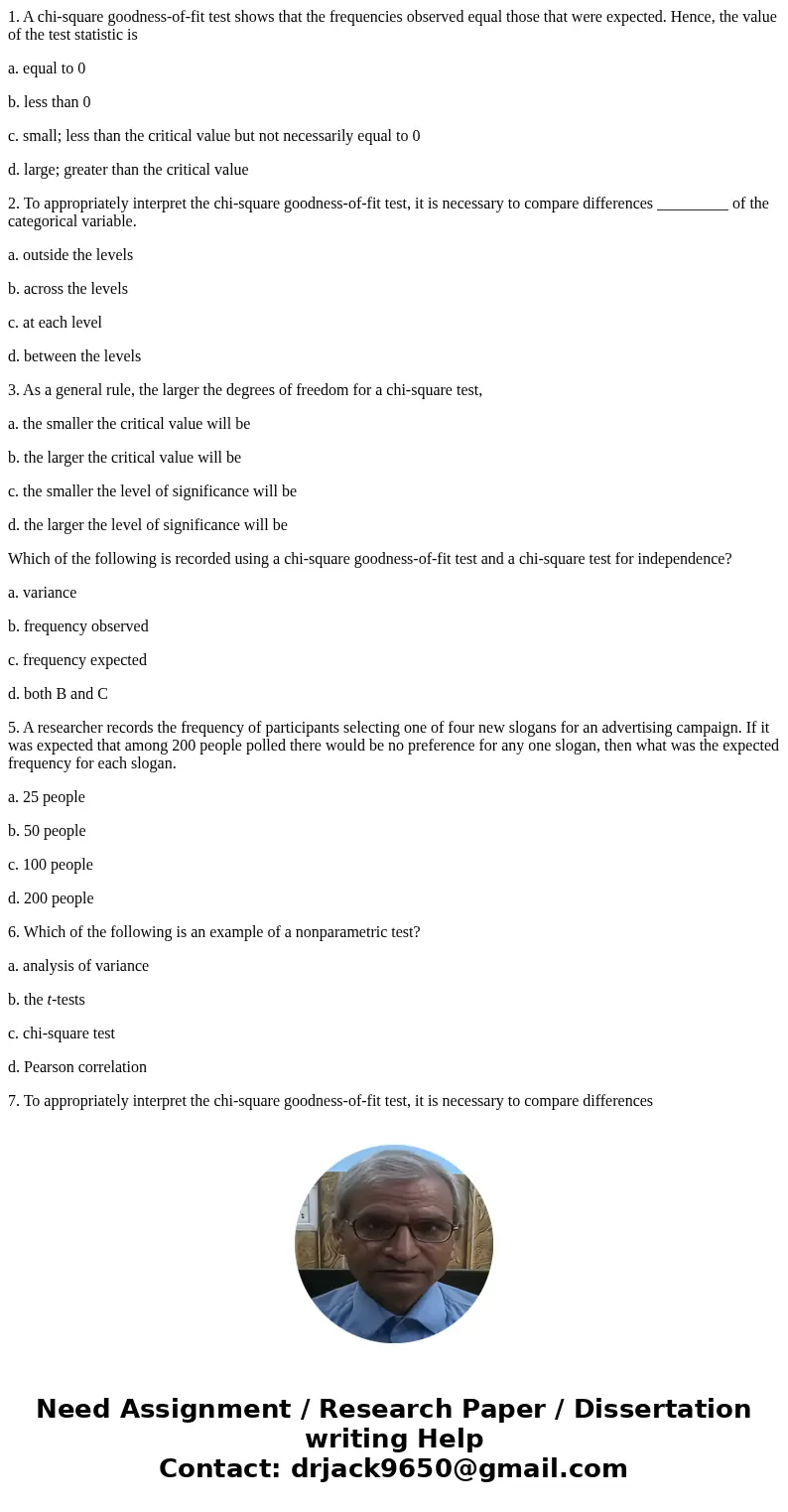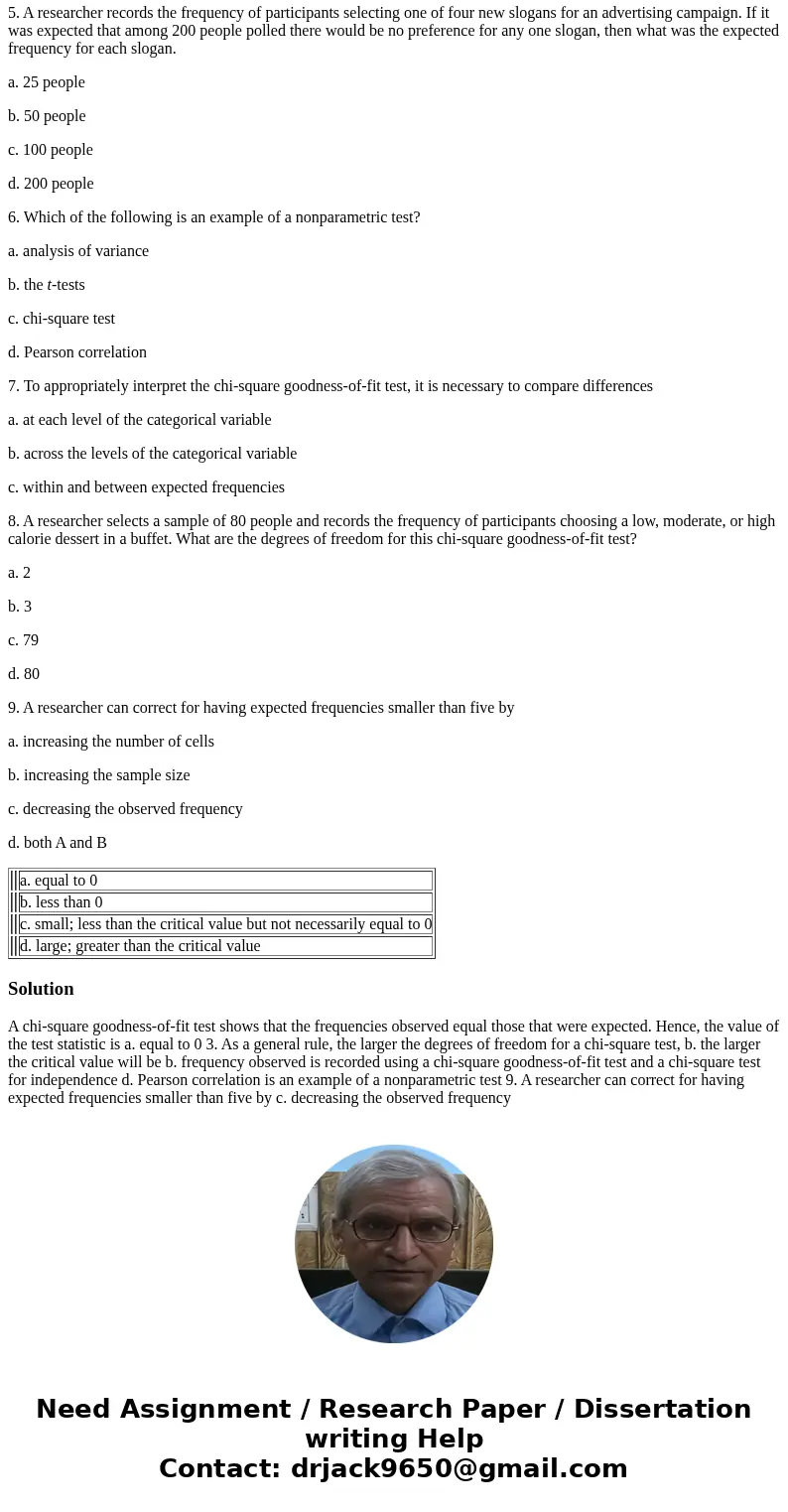1 A chisquare goodnessoffit test shows that the frequencies
1. A chi-square goodness-of-fit test shows that the frequencies observed equal those that were expected. Hence, the value of the test statistic is
a. equal to 0
b. less than 0
c. small; less than the critical value but not necessarily equal to 0
d. large; greater than the critical value
2. To appropriately interpret the chi-square goodness-of-fit test, it is necessary to compare differences _________ of the categorical variable.
a. outside the levels
b. across the levels
c. at each level
d. between the levels
3. As a general rule, the larger the degrees of freedom for a chi-square test,
a. the smaller the critical value will be
b. the larger the critical value will be
c. the smaller the level of significance will be
d. the larger the level of significance will be
Which of the following is recorded using a chi-square goodness-of-fit test and a chi-square test for independence?
a. variance
b. frequency observed
c. frequency expected
d. both B and C
5. A researcher records the frequency of participants selecting one of four new slogans for an advertising campaign. If it was expected that among 200 people polled there would be no preference for any one slogan, then what was the expected frequency for each slogan.
a. 25 people
b. 50 people
c. 100 people
d. 200 people
6. Which of the following is an example of a nonparametric test?
a. analysis of variance
b. the t-tests
c. chi-square test
d. Pearson correlation
7. To appropriately interpret the chi-square goodness-of-fit test, it is necessary to compare differences
a. at each level of the categorical variable
b. across the levels of the categorical variable
c. within and between expected frequencies
8. A researcher selects a sample of 80 people and records the frequency of participants choosing a low, moderate, or high calorie dessert in a buffet. What are the degrees of freedom for this chi-square goodness-of-fit test?
a. 2
b. 3
c. 79
d. 80
9. A researcher can correct for having expected frequencies smaller than five by
a. increasing the number of cells
b. increasing the sample size
c. decreasing the observed frequency
d. both A and B
| a. equal to 0 | ||
| b. less than 0 | ||
| c. small; less than the critical value but not necessarily equal to 0 | ||
| d. large; greater than the critical value |
Solution
A chi-square goodness-of-fit test shows that the frequencies observed equal those that were expected. Hence, the value of the test statistic is a. equal to 0 3. As a general rule, the larger the degrees of freedom for a chi-square test, b. the larger the critical value will be b. frequency observed is recorded using a chi-square goodness-of-fit test and a chi-square test for independence d. Pearson correlation is an example of a nonparametric test 9. A researcher can correct for having expected frequencies smaller than five by c. decreasing the observed frequency

 Homework Sourse
Homework Sourse